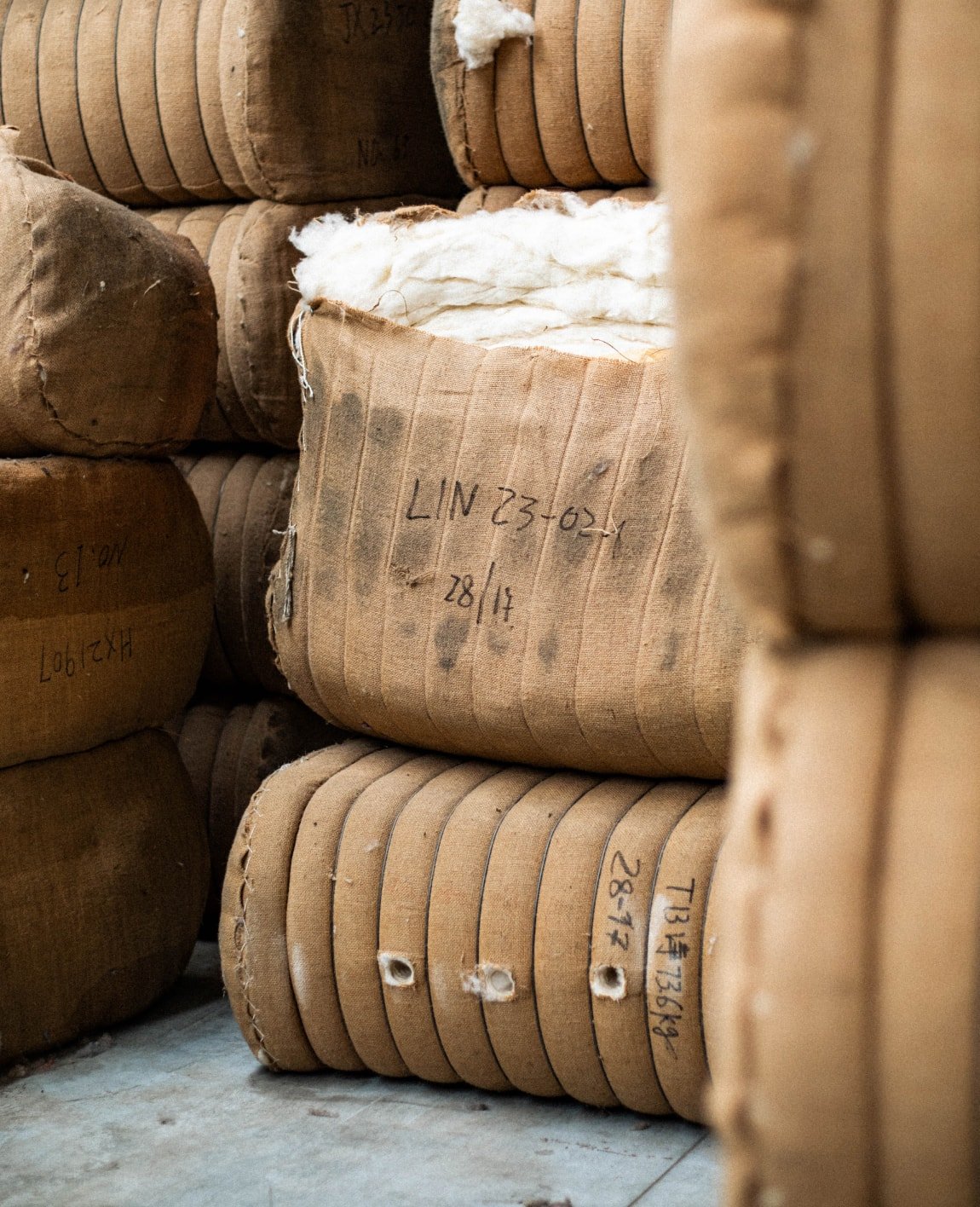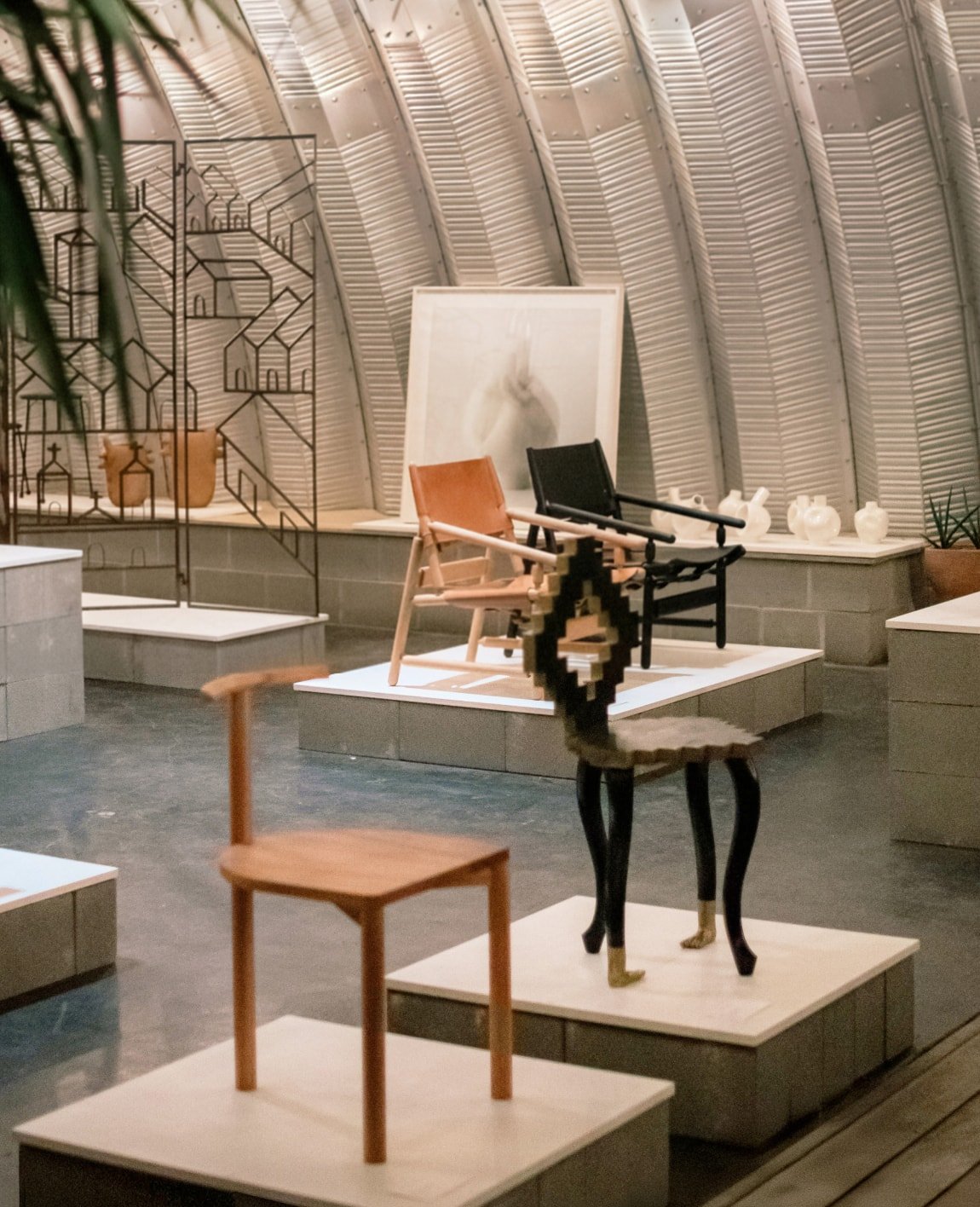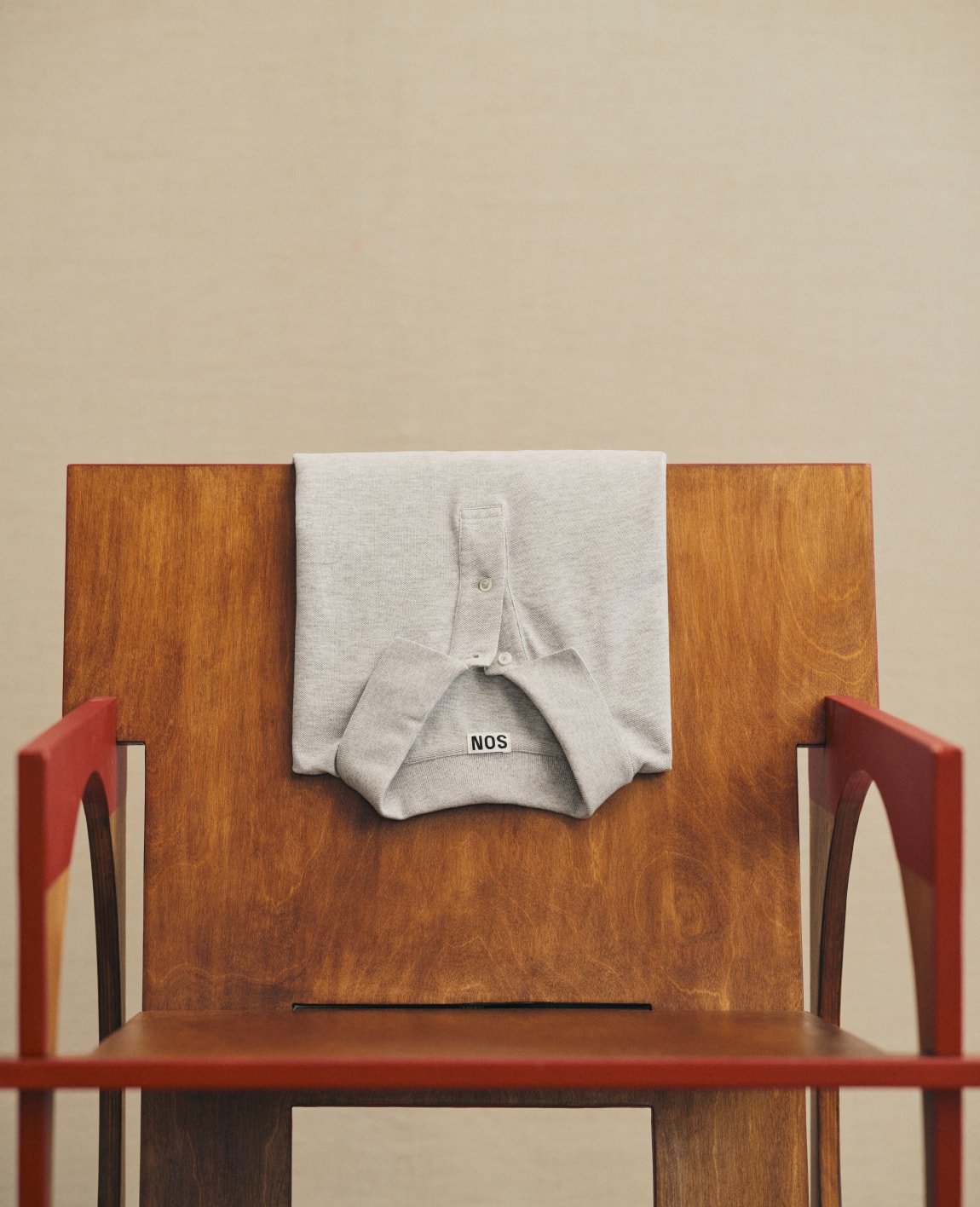Field Notes # 3
A curious design studio in Copenhagen with Thomas Lykke
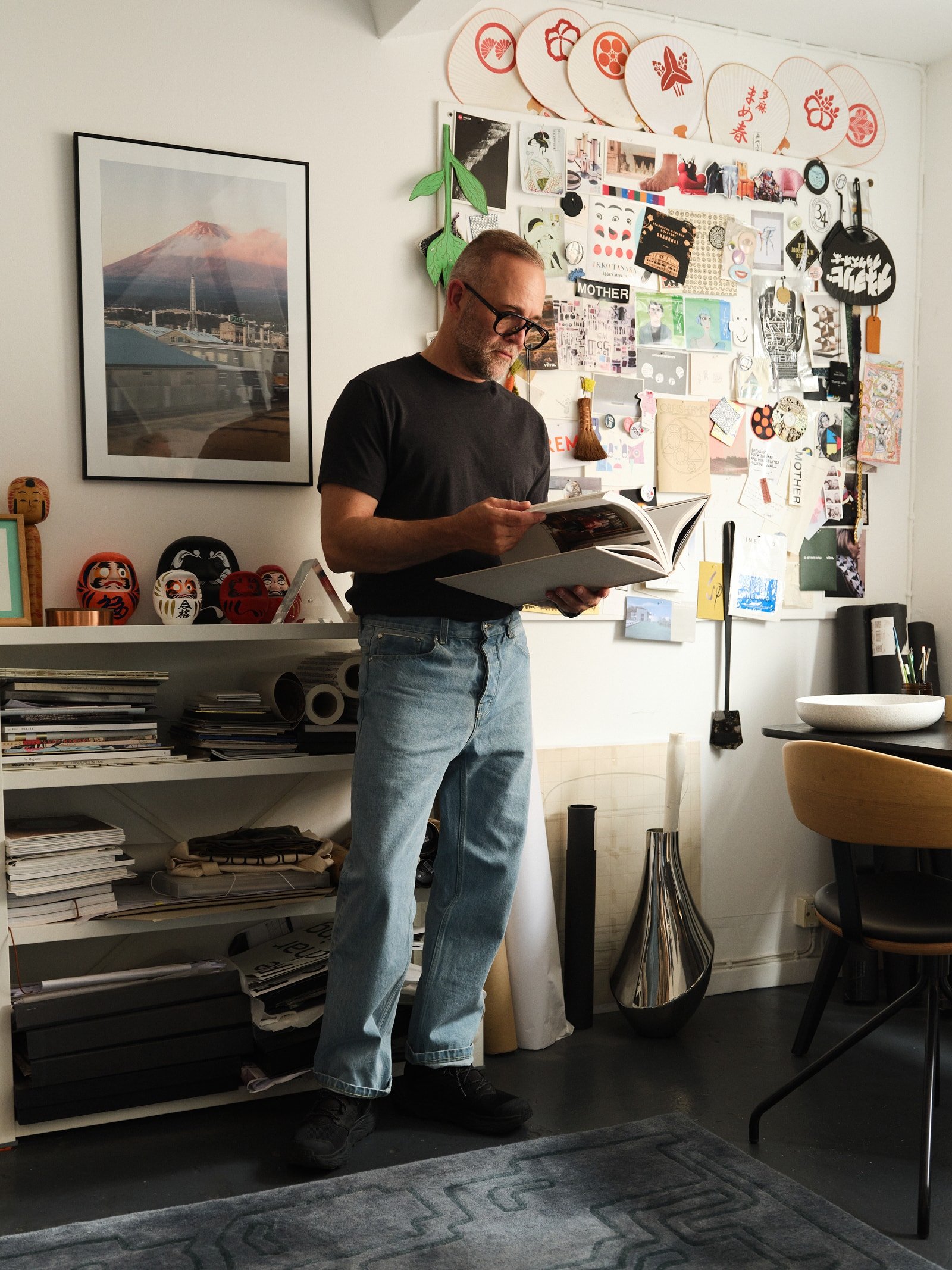
Thomas is wearing the Cotton Hi-Neck T-Shirt.
For the third edition of Field Notes – our new series exploring the inspiring lives of people shaping culture through craft, creativity, and care – we met Thomas Lykke, Founding Partner and Head of Design at interdisciplinary design studio OEO Studio, in our mutual hometown, Copenhagen.
A trained fashion designer, Thomas transitioned into the design industry as an Editor at Wallpaper* Magazine before co-founding OEO Studio with Managing Partner Anne-Marie Buemann. Their practice spans interiors for Michelin-starred restaurants like Noma and Kadeau, collaborations with craftspeople, some of which are to be found in global cultural institutions including the Louvre and Smithsonian, product design for premium brands like Gubi and Mater, as well as creative direction and design strategy, always with a holistic approach and dedication to the tiniest details and overarching narrative.
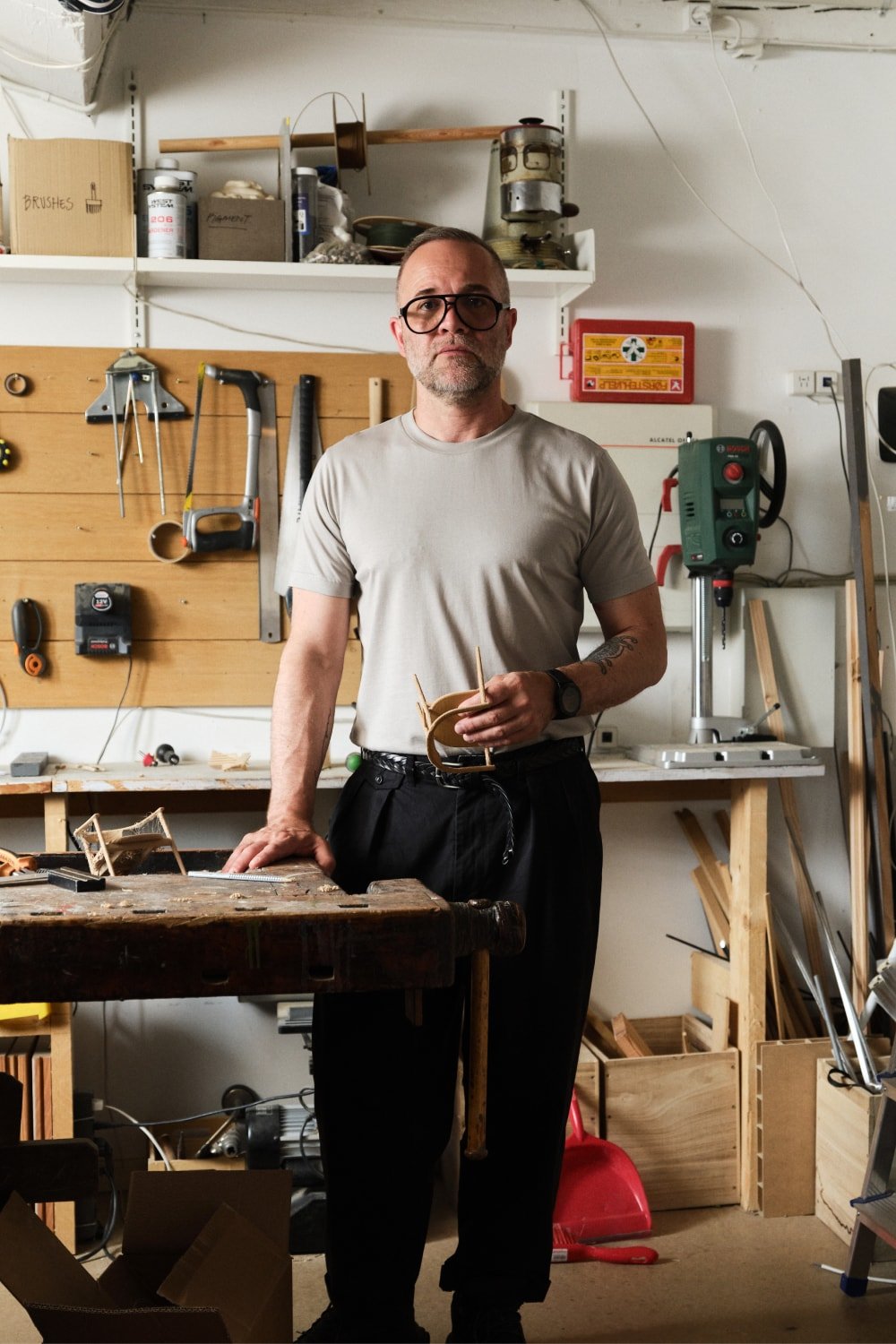

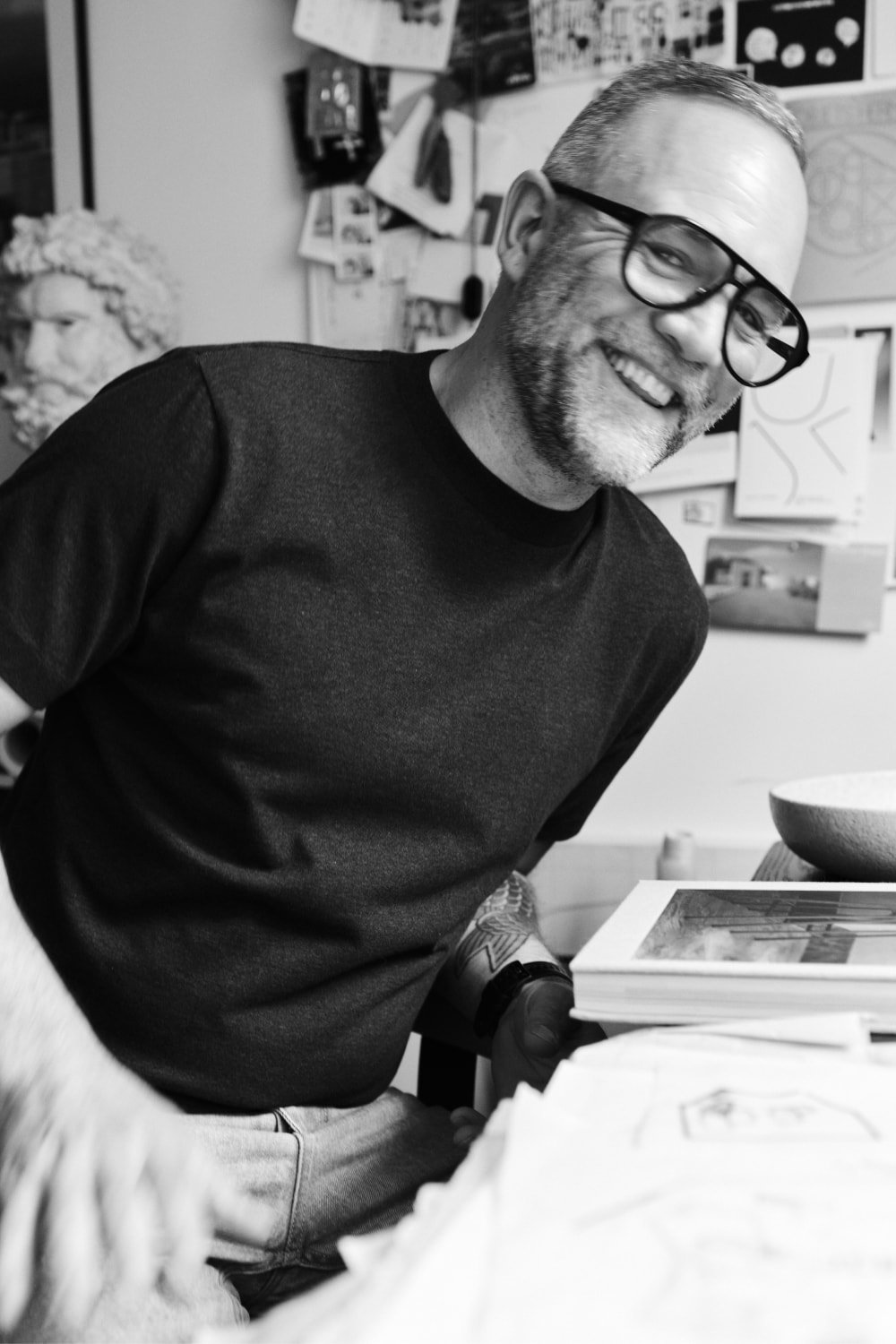
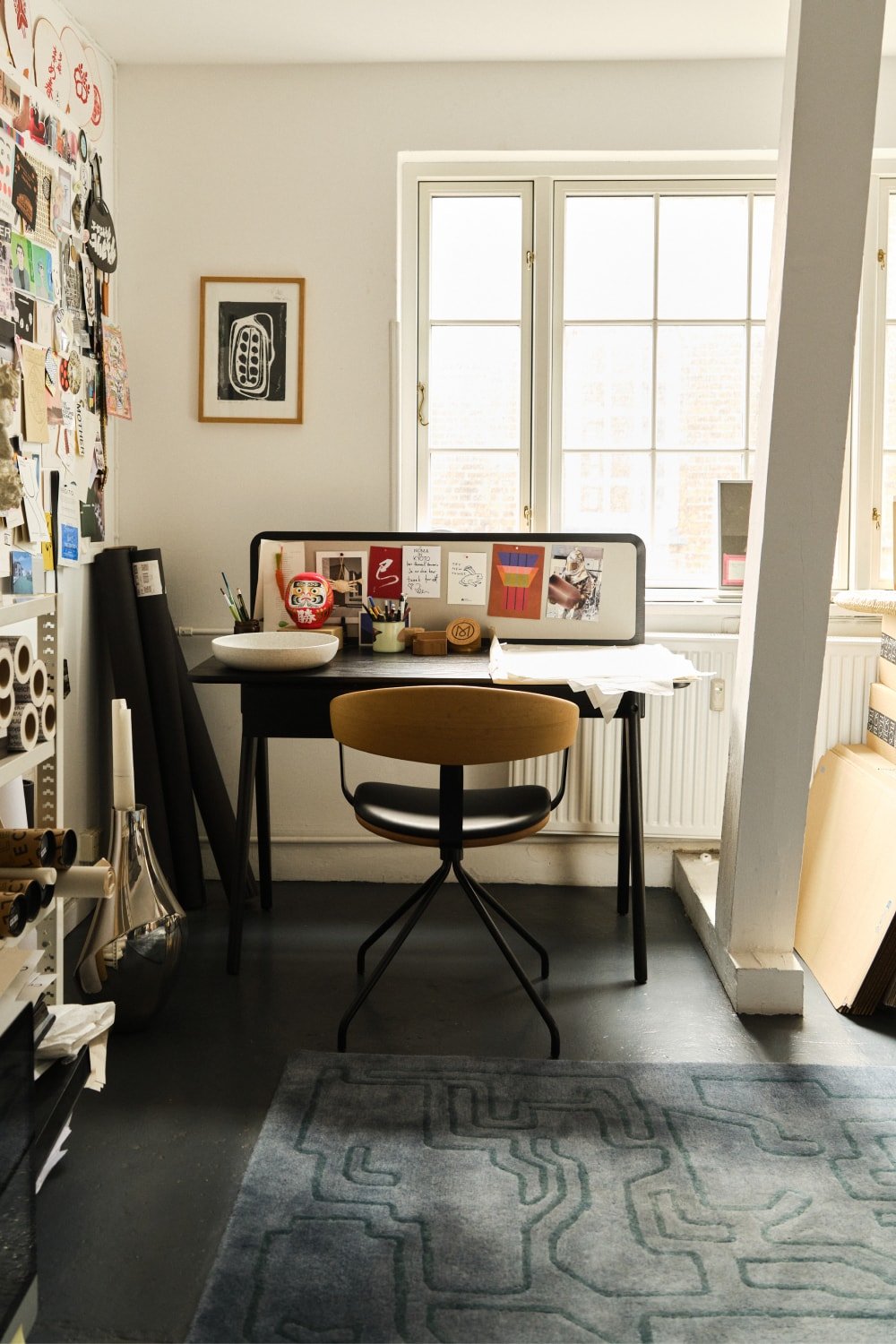
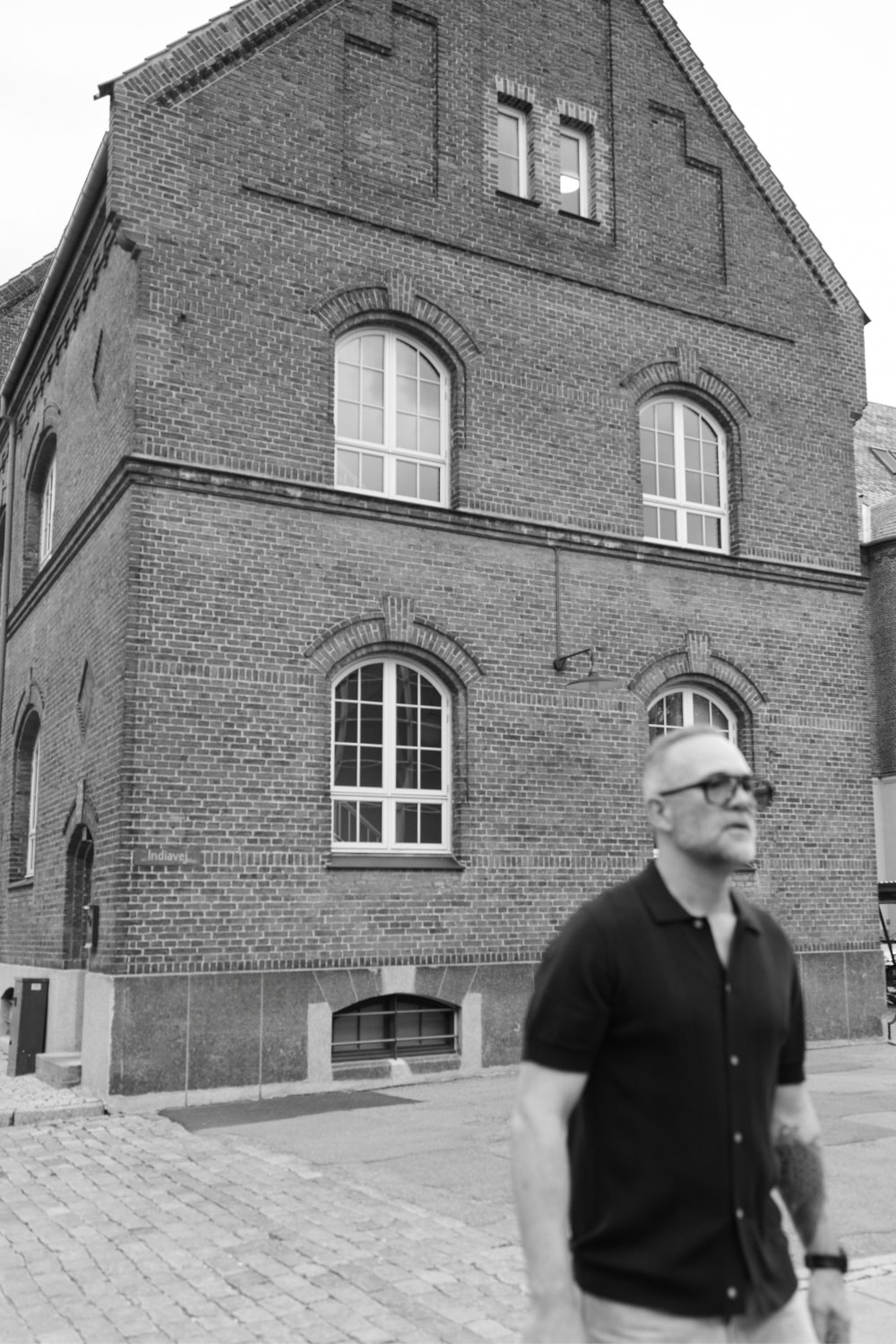
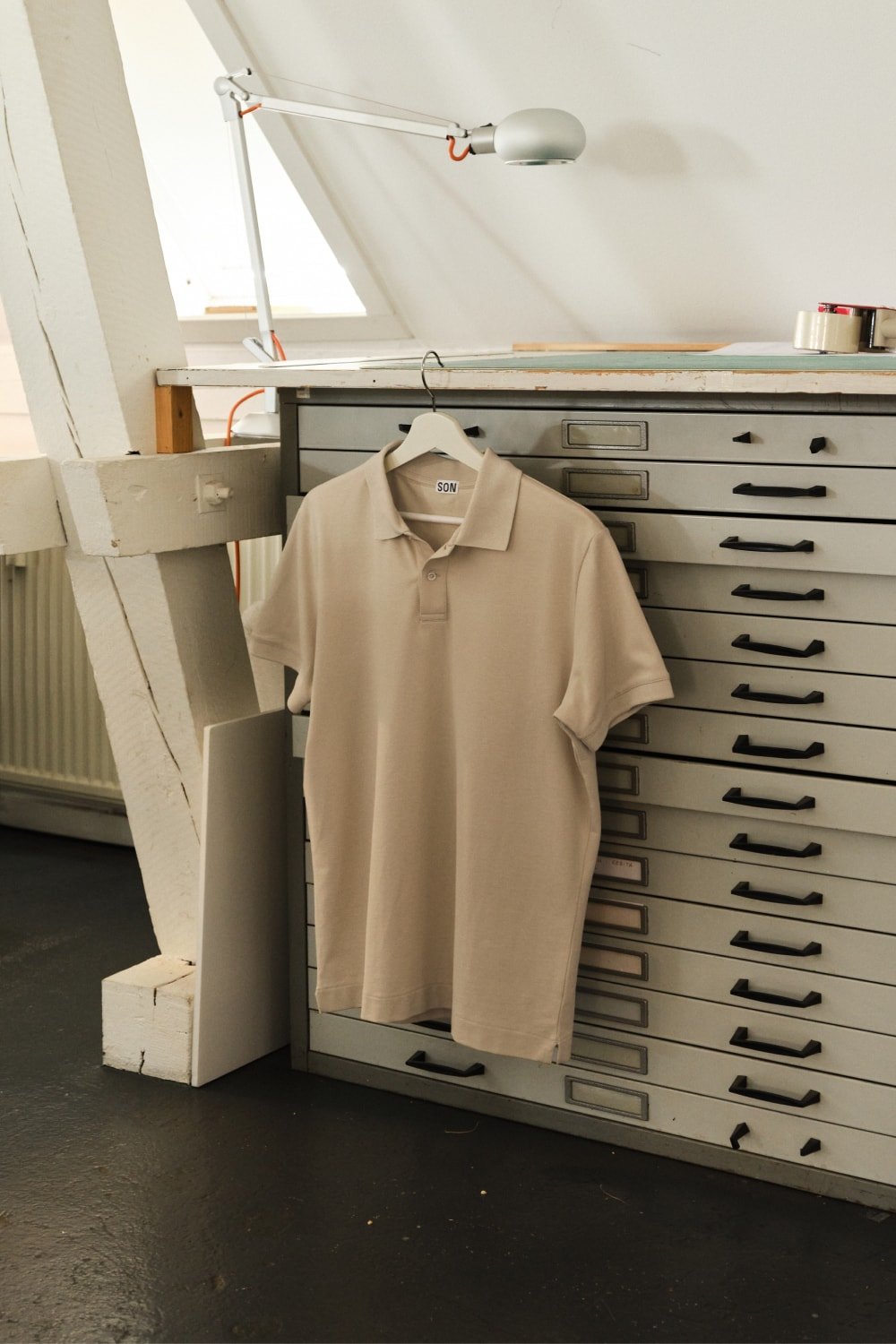
Following him through his studio in the leafy neighborhood of Østerbro, which resembles a treasure trove of inspirational objects and keepsakes, it quickly becomes apparent that Thomas’ story is one of curiosity and genuine human connection. We sat down with him to learn more about his philosophy, what draws him to designing restaurants, and why Copenhagen has his heart.
“I strongly believe that design is one of the strongest languages we have in the world. And it's the only one that we all speak.”
Could you introduce yourself?
My name is Thomas Lykke, and I’m the Head of Design for a Danish design office doing architecture, design, and product design. We’re based here in Copenhagen but also have a project office in Tokyo.
You work on a broad range of projects. How do you approach a new assignment, and what’s your creative process?
Whether it’s interior or product design, it's always the same approach: we don’t jump to the solution. I would describe our way of working as very editorial – I also have an editorial background. It's about finding the essence of a story. And I truly believe that when you have found that, the essence, everything else becomes natural and easy. It’s about giving yourself time to reflect on and define, what it is the world needs, or how people will react to it. We call it "raison d'être" or "reason for being". So that is the driving force for each of our projects; it needs to have that reason. If it doesn't, we will not do it.

Thomas is wearing the Knit T-Shirt.
“This studio is our playground. You enter and you feel that we are making stuff here.”
Your studio feels deeply hands-on, part library of ideas, part workshop. How do these physical surroundings influence your work?
We have a wall of inspiration that comprises objects and artifacts. Something inherited, something brought home from travels, something found. Sometimes also small prototypes and packaging. Basically, it's everything we’re drawn to and feel we can use in our work. It can be a color, a texture, something ultra-refined, or something with a cultural hint. It’s something we use on a daily basis, and people really love it.
This studio is our playground. You enter and you feel that we are making stuff here. It’s not just white walls and empty desks. Creation comes from seeing, but also from feeling, touching, and smelling.
You can’t draw an interior or a building if you never touch the materials you’re going to use. It might look great on the computer, but you need to feel it and sense it. The same goes for a piece of furniture. That’s why we also have a little workshop for prototypes

Are there any materials or textures that you're particularly drawn to?
I'm a material nerd. I love materials. And I have a sweet spot for natural materials, but I’m also very interested in new ways of production that open up new possibilities as long as it's good for nature.
Take mycelium leather; when you look at it, you think it's leather. But it’s actually made of mycelium mushrooms. It has all the qualities of leather, but it's basically fungus growing. It's kind of like a canvas, and the fungus gives it strength and durability. You can use it for shoes and even furniture.
In our approach, we are, of course, very conscious of the impact we have. And prioritize working with durable, high-quality materials that last a long time. We strive to create something that you can pass on to the next generation. To me, that’s super important. And I also think that's why I'm not into trends. I really don't like the word trends because I think that when you're talking about something that has to do with trends, you are talking about something that passes very quickly. And I don't think that's very respectful.
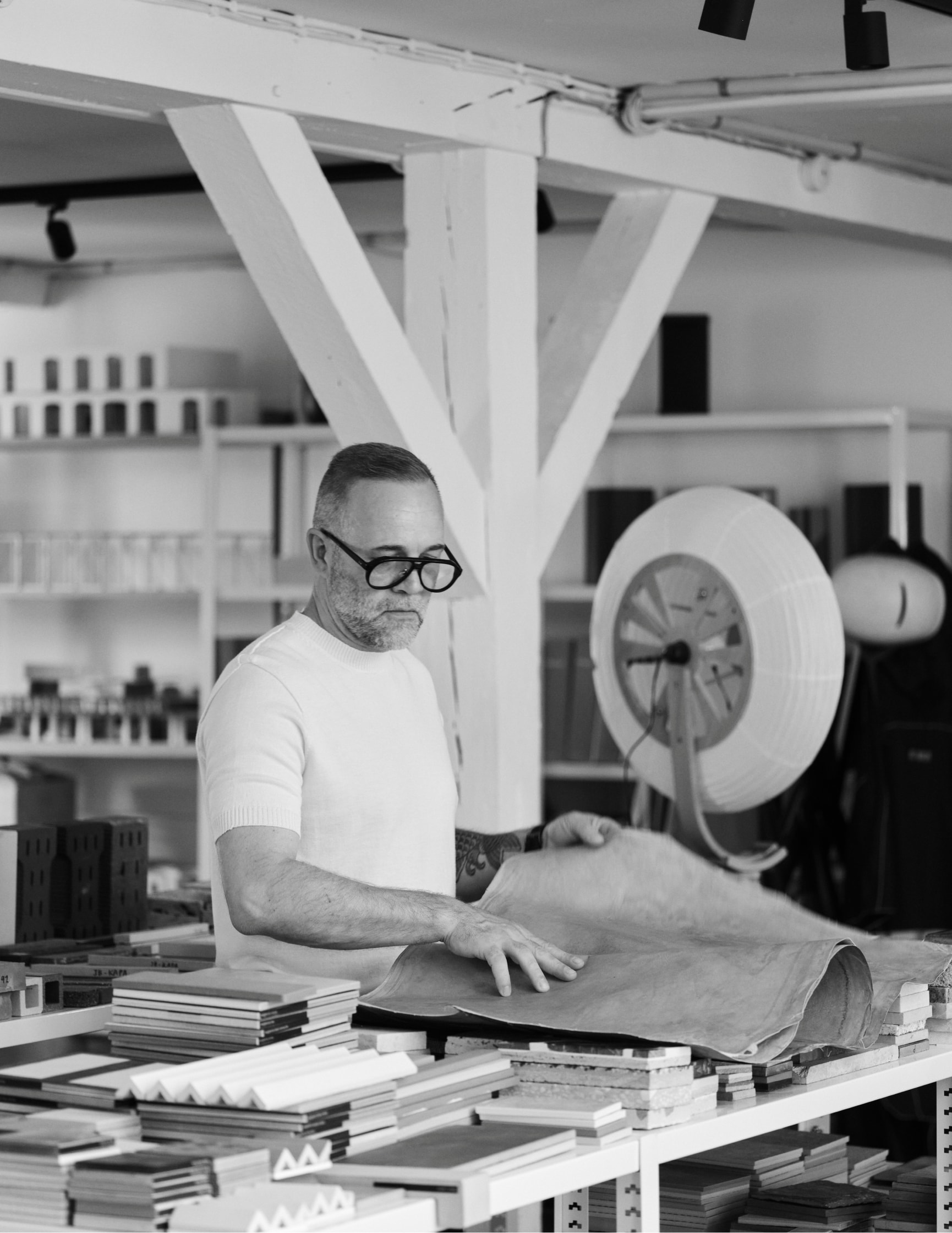
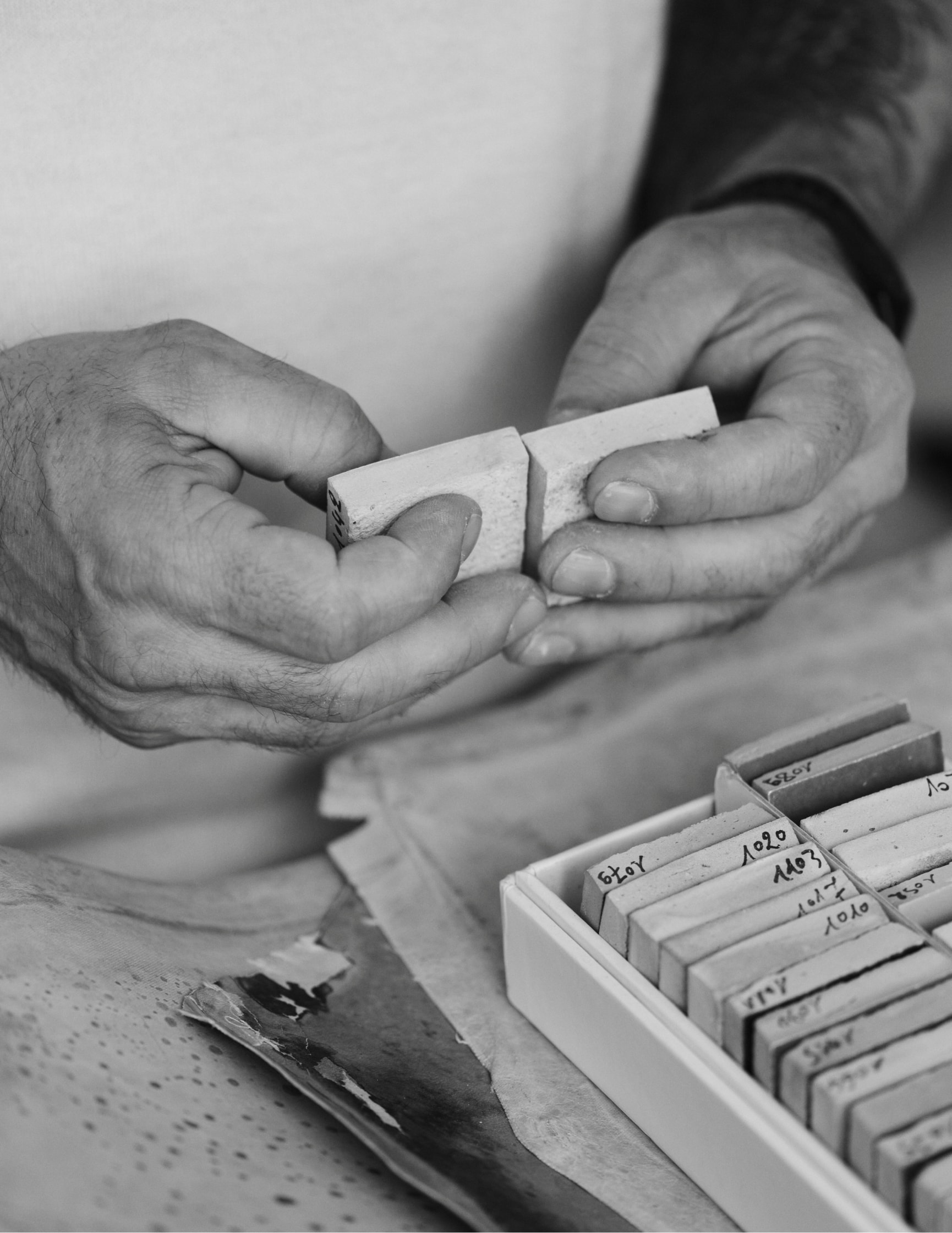
“I really don't like the word trends because I think that when you're talking about something that has to do with trends, you are talking about something that passes very quickly. And I don't think that's very respectful.”
Can you tell us a bit about OEO Studio’s philosophy?
We describe our philosophy as compelling minimalism. Minimalism can be a lot of things. It doesn't have to be a white empty room, which it is in many people's minds. But to me, it's not about that. To me, it's more about boiling something down to the essential, always taking layers off without losing the spirit or soul of an object, a product, or a solution. And the compelling part is about people, about the emotional connection.
That's really what fascinates us: to create things that speak to people. Because I strongly believe that design is one of the strongest languages we have in the world. And it's the only one that we all speak.

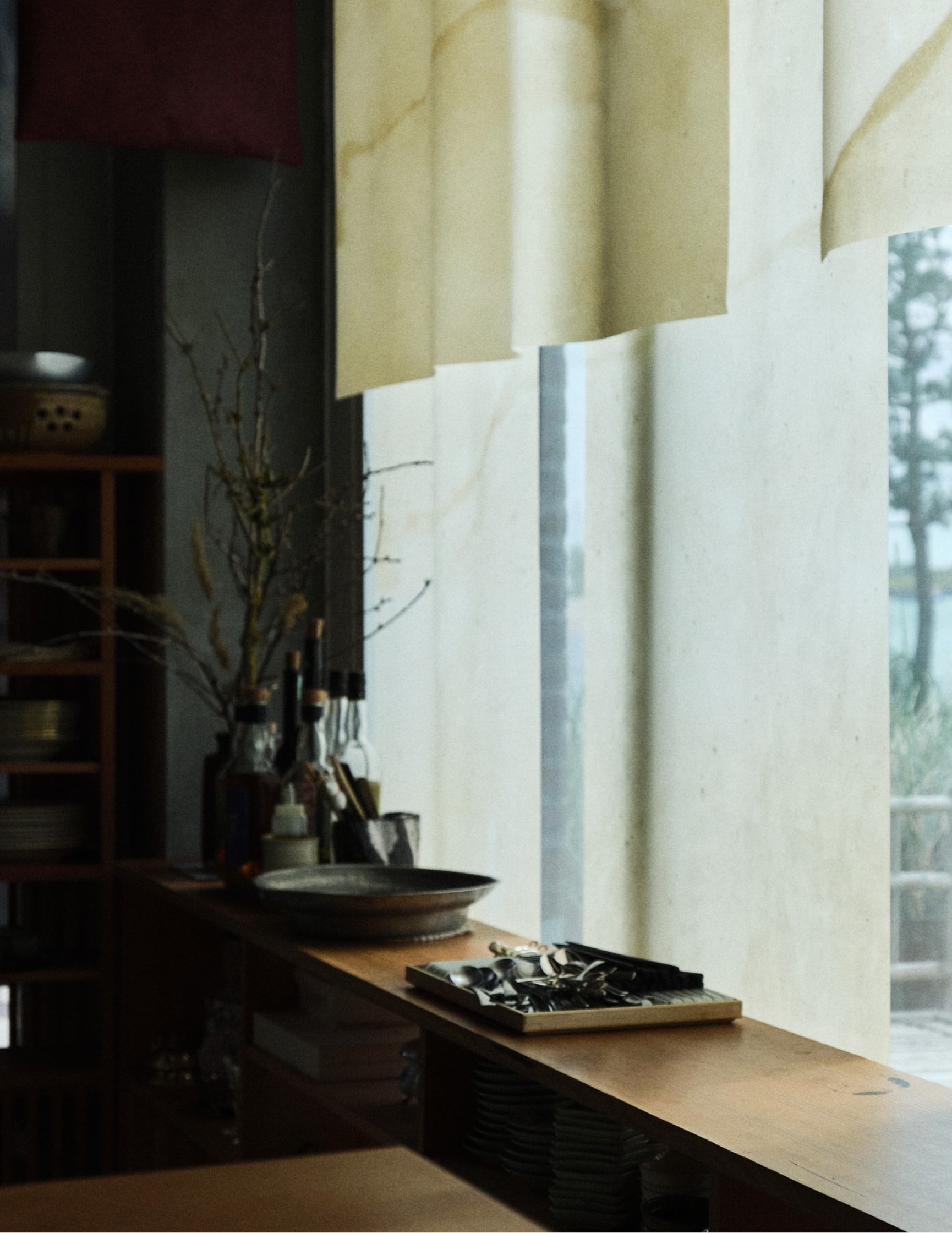
Are there any projects you’re particularly proud of or that feel especially meaningful?
I think what they all have in common is that they are bigger than the product. They really have a purpose and a reason for being.
One example is Japan Handmade. It was a brand collaboration with six different craft companies, and we created this umbrella platform for them to unite to tell the story of craftsmanship in a more modern way. Today, we are in the permanent collections of V&A, the Louvre, the Musée des Arts Décoratifs, the Smithsonian in New York, and the Design Museum in Amsterdam, also in the Design Museum here in Copenhagen. It’s fascinating to create something that has an impact and actually changes the perception of craft, creating that new relevance.
Another project that’s particularly meaningful to me is Akmē, a French-Japanese counter restaurant in Copenhagen, because I have a personal relationship with Emil, the young chef. He's the elder brother of my son's oldest friend since kindergarten, so I've known him since he was a small kid. And when he started his journey as a chef, I said that when the day comes that you’re going to open your own restaurant, just let me know. At some point, the phone rang: Emil and another young chef, Valdemar, had taken over what was previously the space of Sushi Anaba in Nordhavn.
It was a very interesting challenge because there were so many really high-quality materials, great design, and meticulous joinery to work with. It would have almost been a death sin not to repurpose, reuse, and redesign what was already there. In the end, we didn’t buy a single piece of wood. But if you look at what it was before and look at what it is today, they look completely different, which is, of course, important because it's all about Emil and Valdemar’s signature for the space.
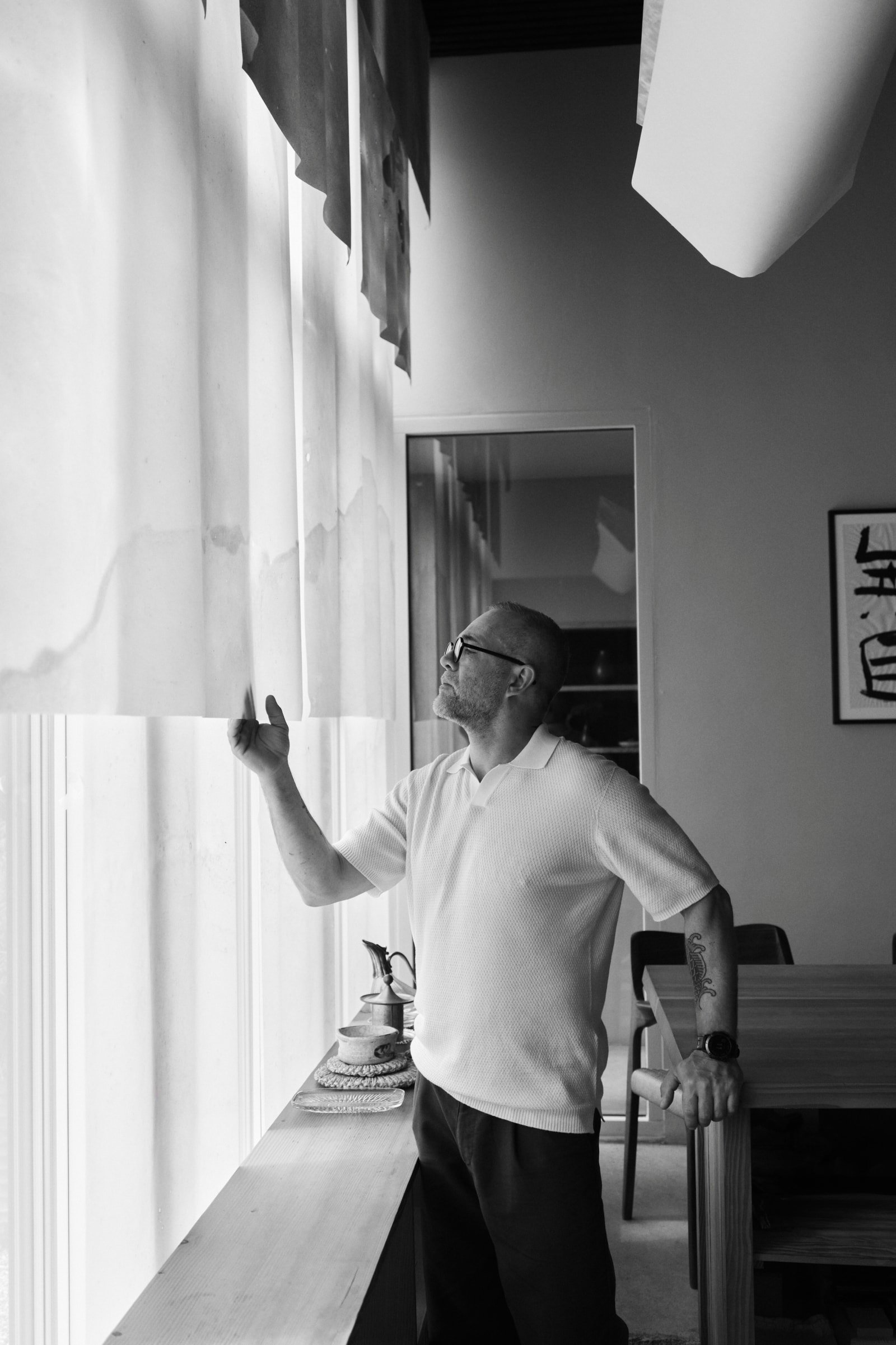
“When creating the interior for Akmē, we worked with a lot of bespoke pieces like this, I would call it window art installation in collaboration with Bonnie Hvillum from Natural Material Studio. Our vision was a layered landscape and Bonnie created it with a combination of textiles made from clamshell powder and composted seaweed. This combined with the backlight from outdoors results in an almost water-colory art piece which I think looks phenomenal.”
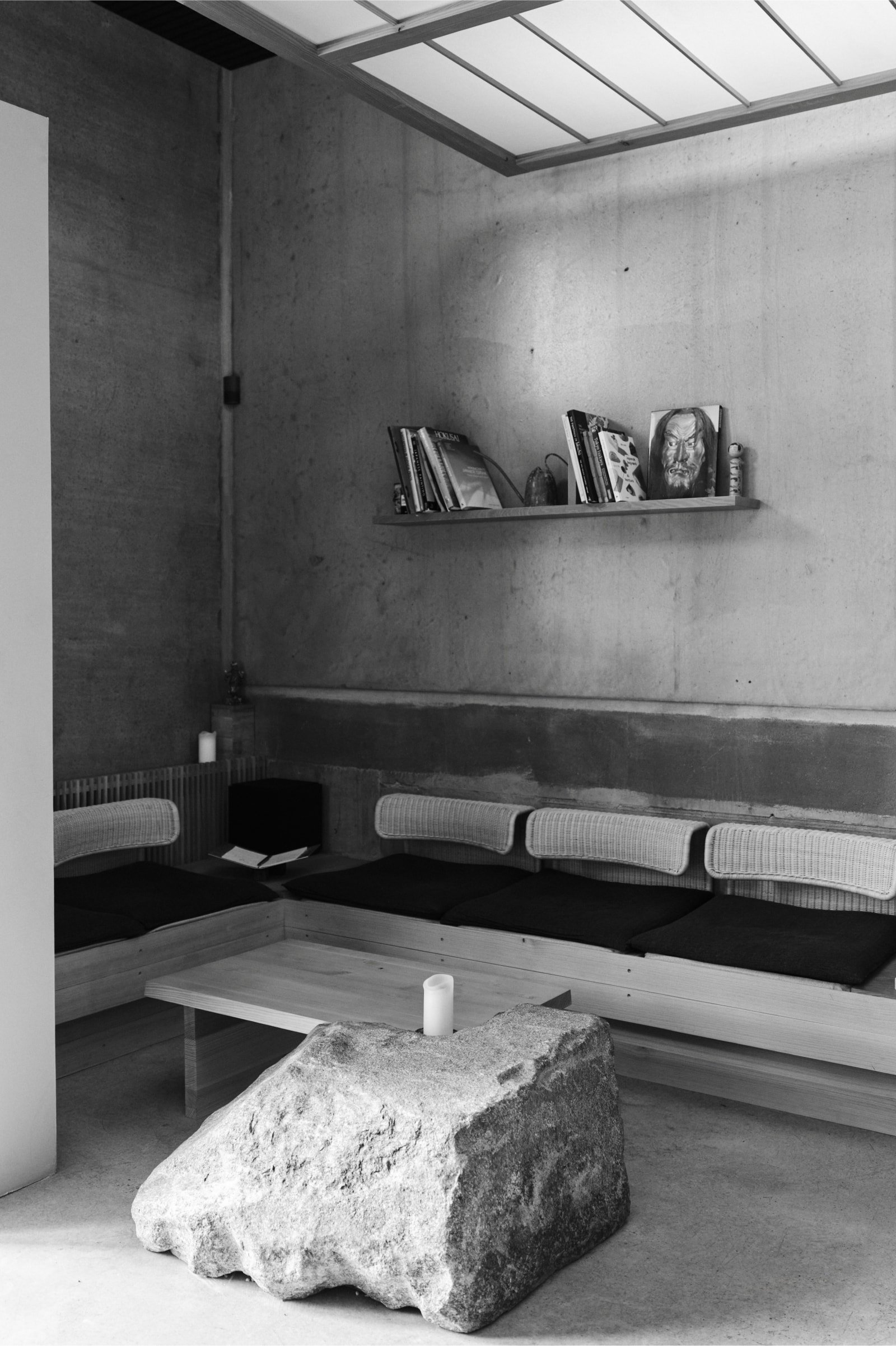
“We didn’t buy a single piece of wood. This shelf for example was previously a step leading into the Tatami room when the space still housed Sushi Anaba. The quality of the materials like this Douglas fir from the German Black Forest was so good, why would you not use as much as possible. I really like the creative challenge to try to transform and repurpose.”
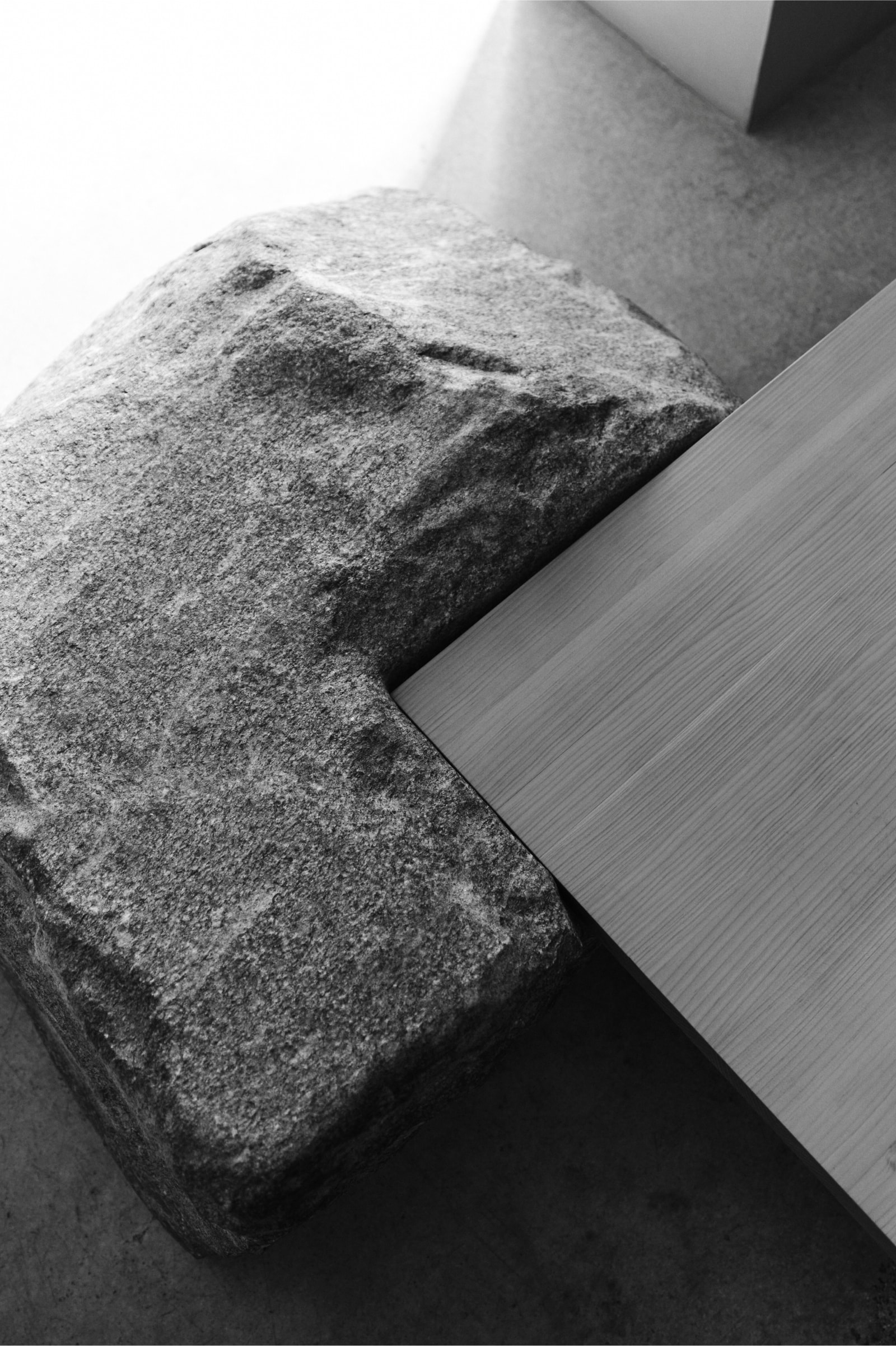
“We transformed the former chef’s counter made from the same Douglas fir into this table and combined it with a 600 kg block of Granite from Denmark.”
“I love working with chefs and doing restaurants – to me, that's the ultimate.”
You’ve worked on a lot of restaurant projects, from Nicolai Nørregaard’s Kadeau in Copenhagen to Noma Kyoto to Inua in Tokyo by Thomas Frebel, who had been René Redzepi’s right hand at Noma for nearly a decade. What draws you to hospitality, especially on that world-class level?
I love working with chefs and doing restaurants – to me, that's the ultimate. In a way, what they do is also kind of design, just in a more abstract way. They’re also working with materials, just as ingredients, for us to eat. And I can create everything around that to create a coherent experience and translate their vision into a physical environment. I get a lot of inspiration from being with chefs and being in the kitchen, seeing how they work with ingredients.
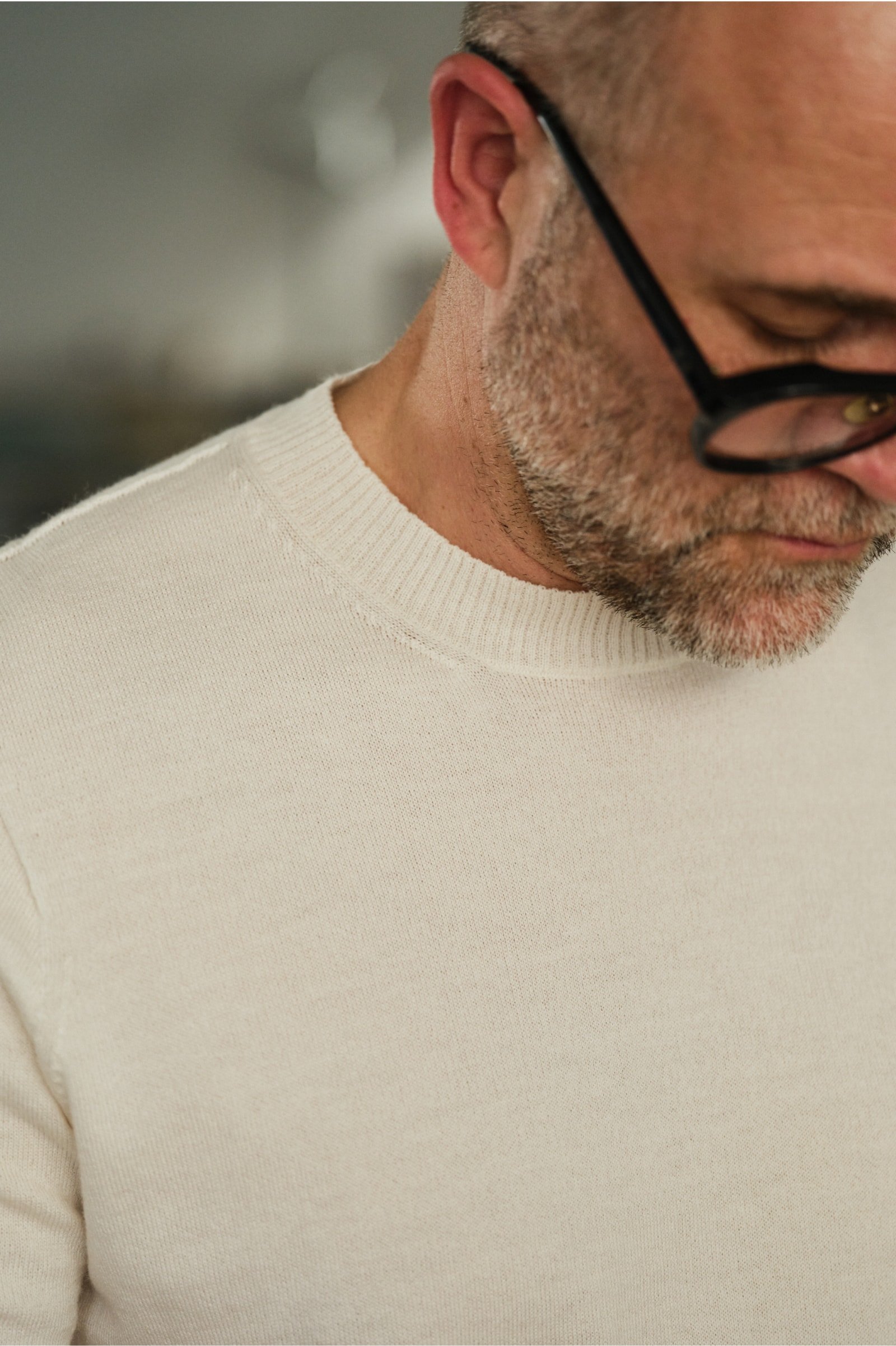
Thomas is wearing the Knit T-Shirt.
You’re an educated fashion designer. Is there a link between how you design and how you approach dressing?
It's something that I really care about; to me, it's very much about personality. I wouldn't call myself a fashionista. But I appreciate when there's a conscious choice behind things.
When I pick a garment, the most important things to me are the quality and the fit. It should be something that lasts. I want to feel that I can wear it out in a way.
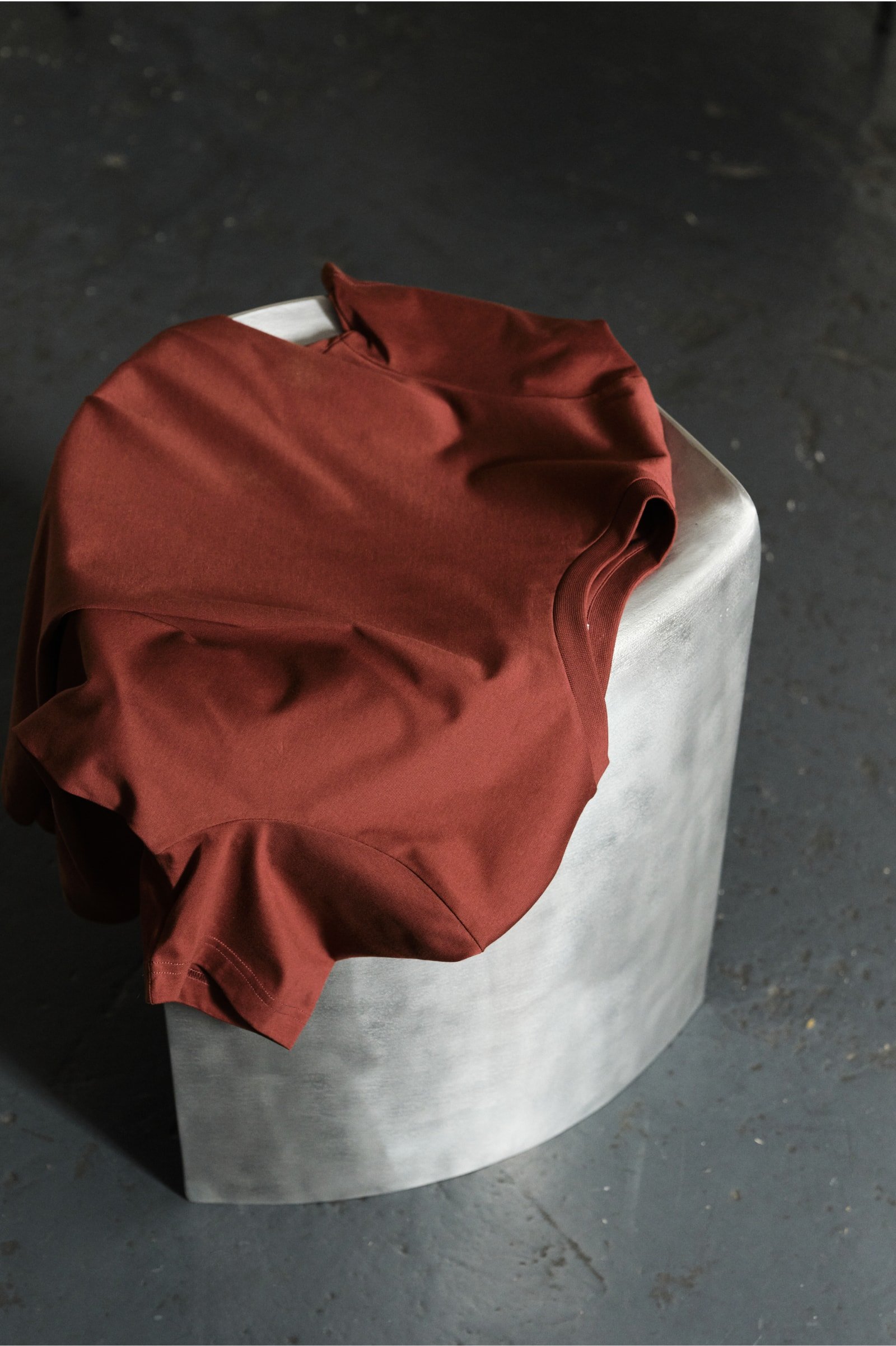
Do you have a favorite Son of a Tailor product?
I am a T-shirt guy. In particular, I like the Hi-Neck T-Shirt from Son of a Tailor. And then, even though it’s a little new to me, but I really like the style, the Pearl Knit Polo. It has a little gentlemanly feel, which I like because I'm also aging. So I thought that would be a nice fit for me now. I think it’s very stylish. But it also has that casualness that I like. I think comfort is important. Something that I can wear when I'm working and still look smart. That to me is the key.
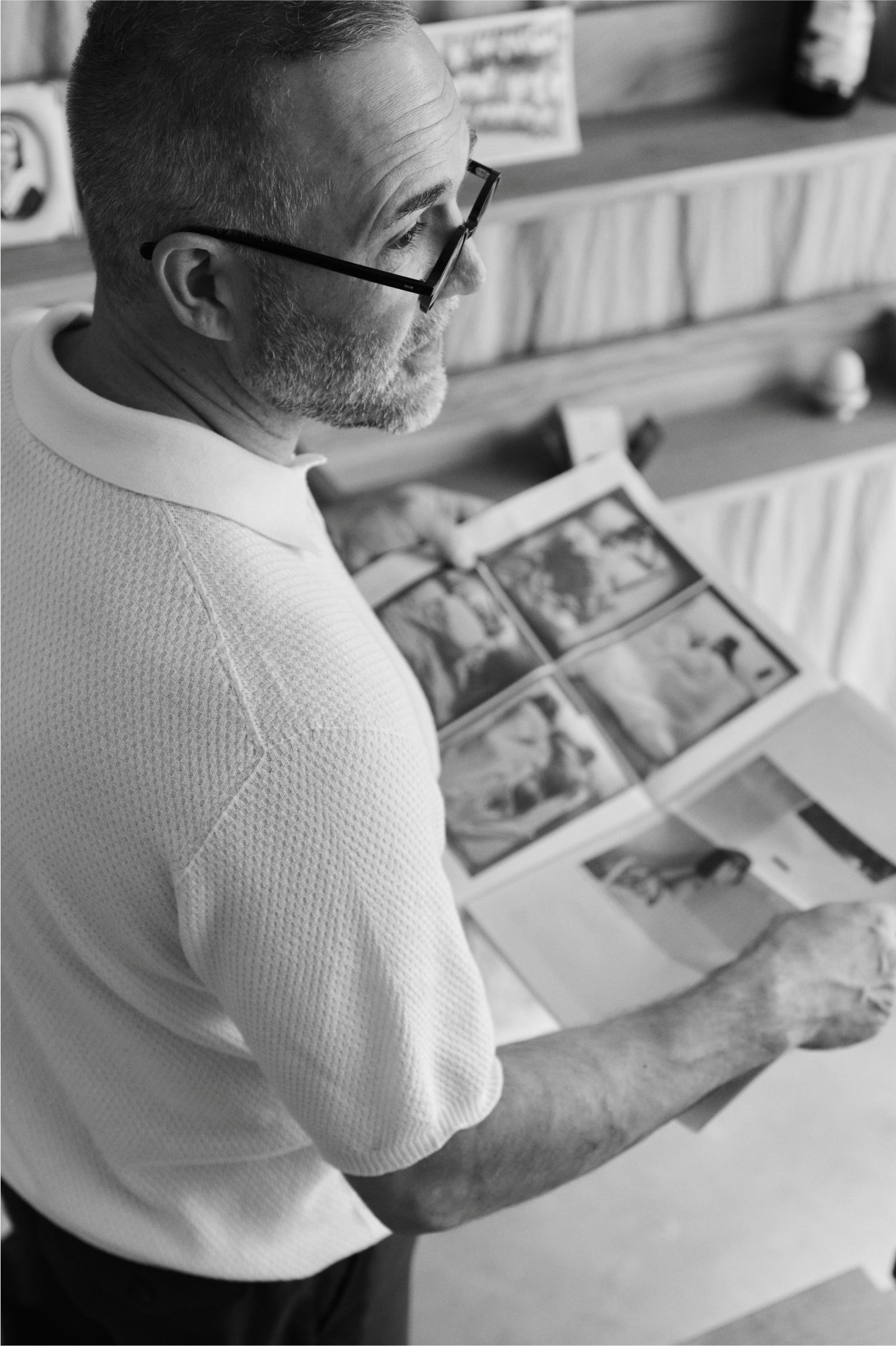
Thomas is wearing the Pearl Knit Open Collar Polo.
Let's wrap up by briefly discussing Copenhagen, where both OEO Studio and Son of a Tailor are based. How do you feel about your hometown?
I love Copenhagen, it really has my heart. I grew up a little outside of the city, but I would still consider myself a Copenhagener by birth. Today, I live and work in the neighborhood of Østerbro, which is one of the old gates, at the eastern end of the lakes. I lived in both London and San Francisco, and I love traveling to new destinations, but whenever I come back to Copenhagen, I feel truly at home.
I like the size of it, I think the people are nice, I like the food, I like the nature, I like the architecture. It's pretty, it's clean, you can bike. So yeah, I think there are many great things about Copenhagen, but it's also close to the airport, so you can get out of it too.
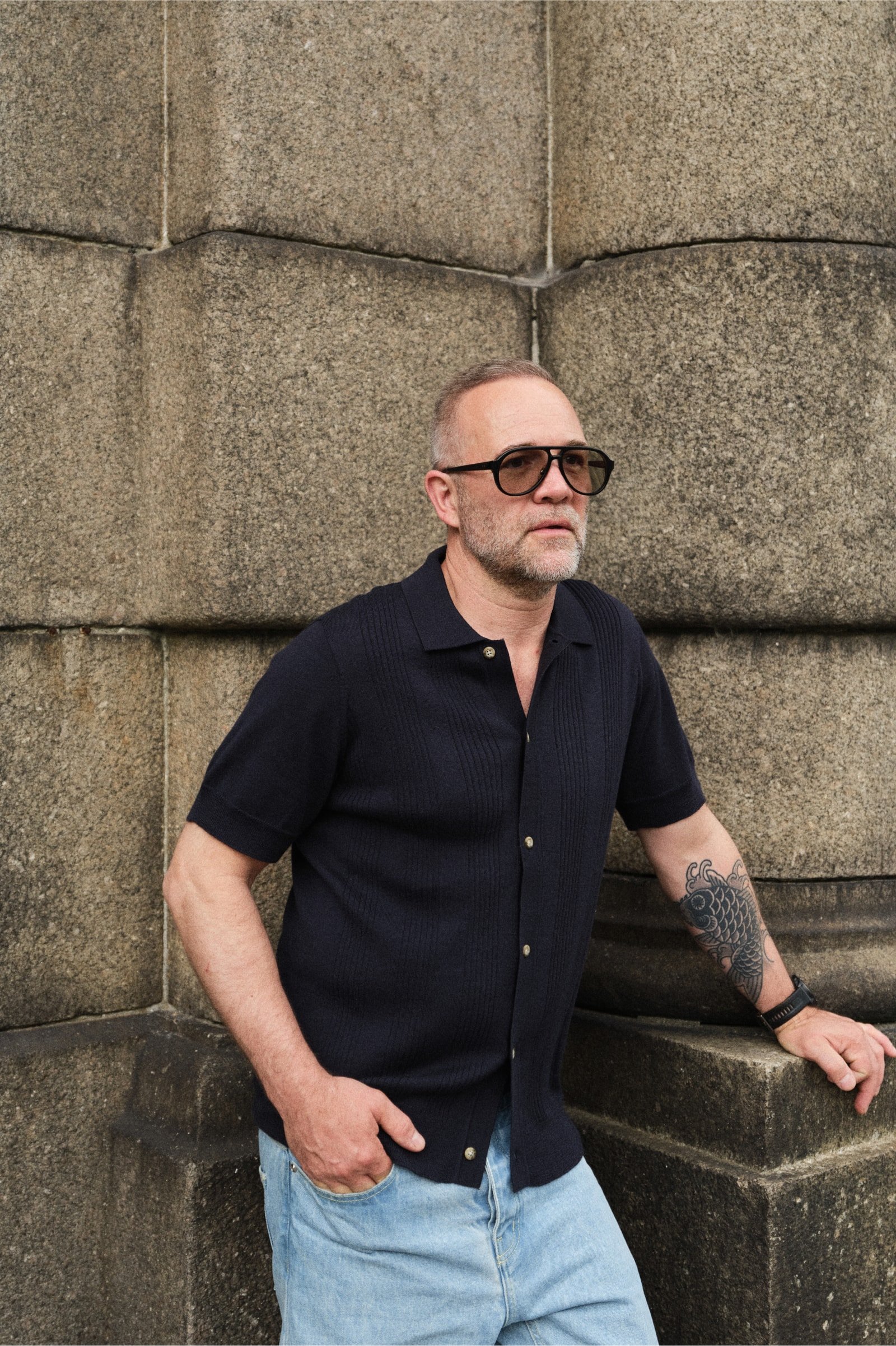
Thomas is wearing the Praia Shirt.
Missed the first two editions of Field Notes, our new series exploring the inspiring lives of people shaping culture, craft, creativity, and care? Join us at Guiliano’s regenerative farm, SOLU, on Mallorca or in and around Christian and Francesco’s Milan apartment.
